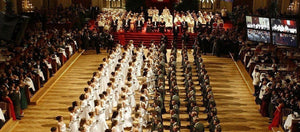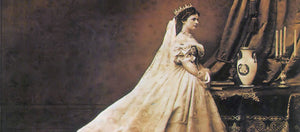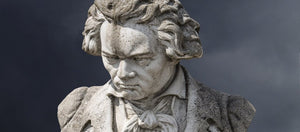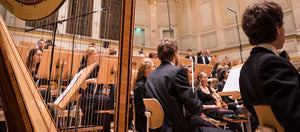Viennese waltz: a scandalous dance that became a Viennese icon

Viennese waltz: a scandalous dance that became a Viennese icon
The old 'One, two, three, One, two, three' - Who hasn't danced or at least heard about the Waltz? Though, one of the world's most popular dances wasn't always considered as such. Due to its close-hold and quick rotations, Waltz was once named the "Forbidden dance".
Waltz is the oldest of the current ballroom dances. First waltzes were danced in the location of today's Germany and Austria, back in 13th century. The style was immediately picked up by other nations, who each created it's own form and style of the dance.
The form we know today was born in the suburbs of Vienna and Austria's mountain regions. During the 17th century it was played and danced in ballrooms of the Habsburg court. By the end of eighteenth century this once Austrian peasant dance had been accepted by high class.
Despite its popularity, the dance was not completely accepted throughout the nation. Many dancing masters considered the Waltz as a threat to the profession. Its basic steps could be learned in no time, as opposed to other court dances like minuet, which took a fair amount of time to learn and master.

Before the Waltz, people danced around each other with little or no contact at all. As the dance started gaining popularity, it was criticised on moral grounds due to its close-hold stance and fast turning movements. Religious leaders regarded it as vulgar and sinful. The dance was criticised to the point where people were threatened with death from waltzing.
Over time, established musicians began recognising the quality and appeal of the Waltz. Among them were Franz Schubert, Johann Strauss Father and later the best known waltz composer, the so-called “Waltz King” - Johann Strauss Son. The dance was getting more and more popular, causing the court to build numerous dance halls to accommodate the craze. It established itself as a standard accompaniment for noble events in Vienna and is considered as one of the most popular dance styles up until this day.
In 1812 the dance was introduced into England as 'the German Waltz'. It caused a huge sensation. When Lord Byron first saw it, he found his lady friend clasped closely by "a huge hussar-looking gentleman, turning round and round to a confounded see-saw, up-down sort of turn like two cockchafers spitted on the same bodkin".
By 1864 Strauss composed exclusively dance music and propelled the Waltz genre to popularity, for which he earned the title “The Waltz King”. Three years later, the famous song “On the beautiful blue Danube”, most commonly known as “Danube Waltz”, was composed and is today recognised as unofficial Austrian anthem.
Even though Waltz was considered the root of all evil during 17th and 18th century, it made it's way to the elite and is now the most popular of all ballroom dances. It certainly is a must-do if you're visiting Vienna for New Year's or any other special occasion. Grab your partner close, pre-count the 'One, two, three's' in your head and waltz away!







